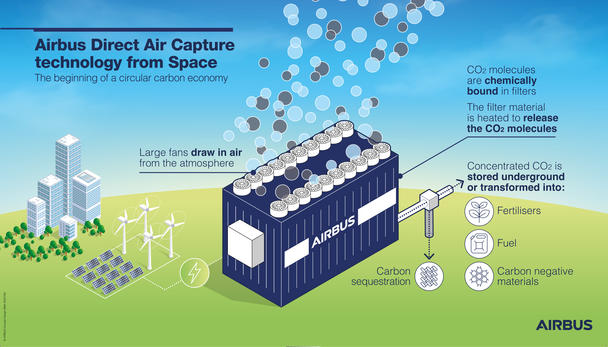
Image Source: Google
Climate change is one of the most pressing issues of our time, and as the world grapples with its effects, innovative solutions are crucial in the fight against it. Direct Air Capture (DAC) technology is one such groundbreaking innovation that has the potential to revolutionize the way we address climate change. By capturing carbon dioxide directly from the air, DAC offers a promising avenue for reducing greenhouse gas emissions and mitigating the impact of climate change.
The Science Behind Direct Air Capture
DAC technology involves capturing carbon dioxide directly from the atmosphere using chemical processes. This captured CO2 can then be stored underground or utilized in various industries. Here's how DAC works:
Key components of Direct Air Capture:
- Air capture systems equipped with sorbents that selectively bind to CO2 molecules.
- Regeneration units that release the captured CO2 for storage or utilization.
- Carbon storage facilities where the captured CO2 can be securely stored underground.
By removing CO2 from the atmosphere, DAC technology can help offset emissions from hard-to-decarbonize sectors such as aviation and heavy industry, making it a valuable tool in the fight against climate change.
The Benefits of Direct Air Capture
Direct Air Capture offers a range of benefits in the fight against climate change and the transition to a low-carbon economy. Some of the key advantages of DAC technology include:
Advantages of Direct Air Capture:
- Carbon removal: DAC can help remove CO2 from the atmosphere, contributing to overall emissions reduction targets.
- Carbon utilization: Captured CO2 can be used in various industries, such as fuel production or carbonated beverages, creating new economic opportunities.
- Scalability: DAC technology can be scaled up to capture large volumes of CO2, making it a versatile solution for addressing emissions at different scales.
- Location flexibility: DAC facilities can be deployed in various locations, allowing for targeted emissions reductions in specific regions.
These benefits position Direct Air Capture as a powerful tool in the fight against climate change, offering a pathway to achieving net-zero emissions and a sustainable future.
Challenges and Opportunities
While Direct Air Capture shows great promise in combating climate change, it also faces challenges that need to be addressed to realize its full potential. Some of the key challenges and opportunities associated with DAC technology include:
Challenges:
- Energy requirements: DAC technology currently requires significant energy inputs, which can limit its environmental benefits if sourced from fossil fuels.
- Cost: The high cost of Direct Air Capture technology is a barrier to widespread adoption, requiring innovative financing mechanisms to scale up deployment.
- Public acceptance: Some communities may have concerns about the safety and environmental impact of storing captured CO2 underground, necessitating transparent communication and engagement.
Opportunities:
- Technological advancements: Continued research and development in DAC technology can lead to efficiency improvements and cost reductions over time.
- Policy support: Government policies and incentives can accelerate the deployment of DAC technology and create a more favorable regulatory environment.
- Collaboration: Partnerships between governments, industries, and research institutions can drive innovation and knowledge-sharing in the DAC field.
Addressing these challenges and capitalizing on the opportunities can help unlock the full potential of Direct Air Capture in shaping the fight against climate change.
The Future of Direct Air Capture
As the urgency to address climate change intensifies, Direct Air Capture is poised to play a significant role in reducing greenhouse gas emissions and achieving carbon neutrality. The future of DAC technology holds immense promise, with ongoing advancements and collaborations driving its evolution. Here are some key trends shaping the future of Direct Air Capture:
- Scaling up deployment: Increasing the capacity and number of DAC facilities to capture larger volumes of CO2 and accelerate emissions reductions.
- Technological innovation: Developing new materials and processes to enhance the efficiency and cost-effectiveness of DAC technology.
- Integration with other solutions: Combining DAC with renewable energy sources and carbon utilization technologies to create synergies and maximize impact.
By harnessing innovation and leveraging the potential of Direct Air Capture, we can make significant strides in combating climate change and building a more sustainable future for generations to come.
Conclusion
Direct Air Capture represents a groundbreaking technology that offers a promising solution in the fight against climate change. By capturing carbon dioxide directly from the atmosphere, DAC can help reduce greenhouse gas emissions, create new economic opportunities, and drive the transition to a low-carbon economy. While challenges remain, the benefits of DAC technology are clear, positioning it as a key tool in shaping the future of our planet. With continued innovation and collaborative efforts, Direct Air Capture has the potential to make a significant impact in the global effort to combat climate change.
